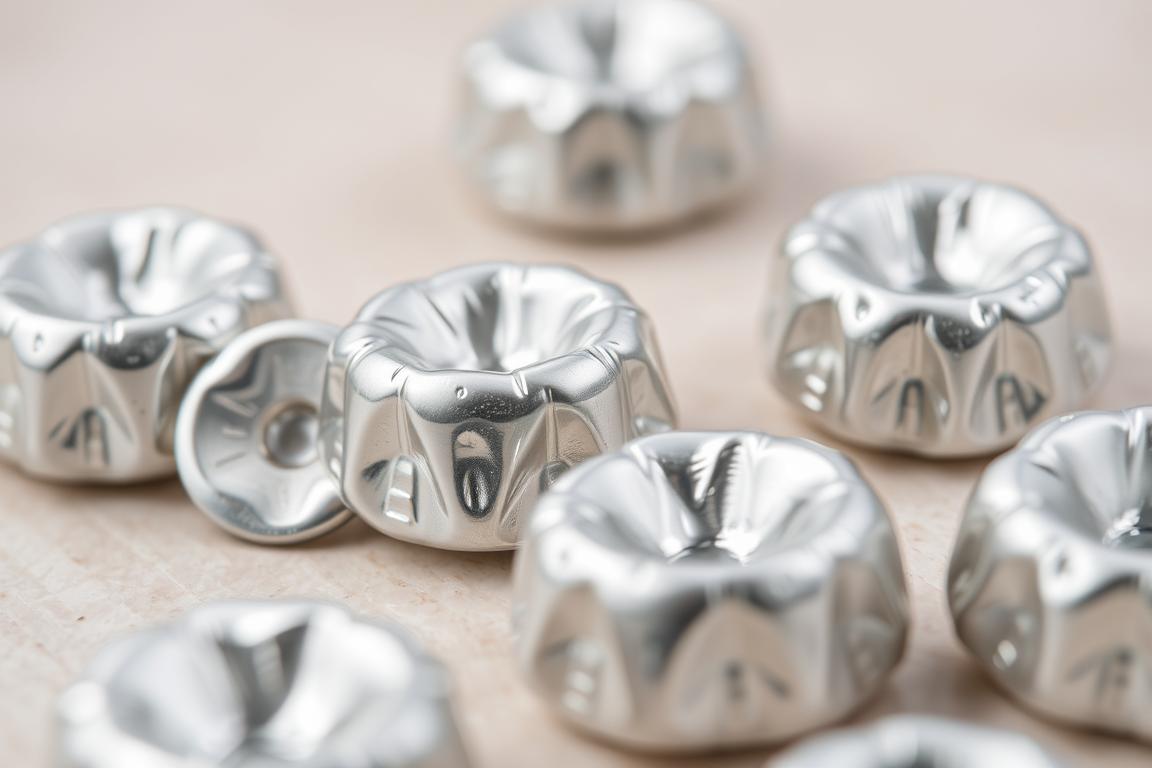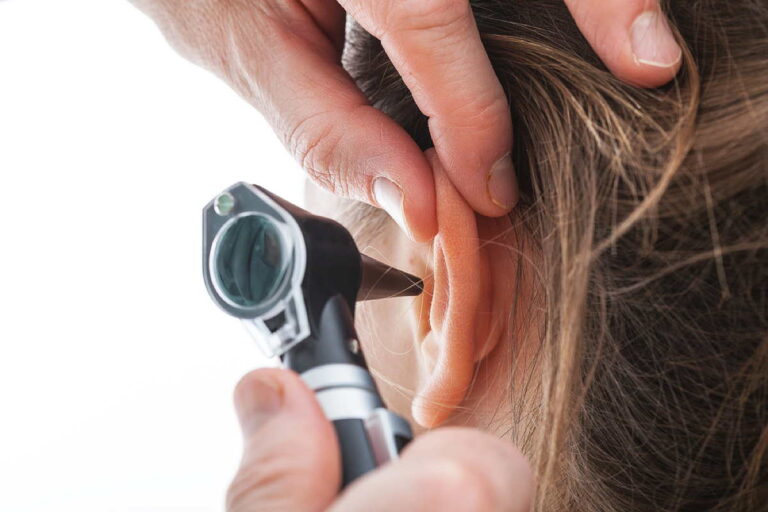Amalgam fillings: Risks and alternatives
Did you know that amalgam consists of 50% mercury? Despite over 150 years of use in dentistry, the potential health risks posed by amalgam fillings should not be underestimated. While scientific evidence largely lacks a direct link between health problems and intact amalgam fillings, children and pregnant women in particular are at increased risk of being affected by the mercury vapor released when these fillings are placed or removed. In view of these risks, many patients are looking for safe and aesthetically pleasing alternatives, such as composite or ceramic fillings.
Short & sweet
- 🦷 Amalgam fillings consist of 50% mercury, which can be harmful to health ⚠️.
- 💨 Mercury vapor can be released when inserting or removing such fillings – not without danger! 😷
- 👶🤰 Children and pregnant women are among the most vulnerable groups and should be given special protection.
- ✅ Alternatives to amalgam include composite or ceramic fillings 🧱✨ .
- 💸 High-quality versions may cost more, but simpler solutions are often covered by health insurance ✅🏥.
What is amalgam?
Amalgam is a material that has been used in dentistry for a long time and consists mainly of mercury and other metals. It has proven itself over decades due to its mechanical properties and durability. Amalgam is widely used as a metal filling, especially in Germany.
Composition of amalgam
The composition of amalgam consists of around 50% mercury, combined with metals such as silver, copper, tin and zinc. This composition enables a robust and durable metal filling, which is preferred in dentistry for large defects in the posterior region. Gamma-2-free amalgams, which have been in use since the 1980s, are particularly resistant to corrosion compared to older gamma-2-containing variants. This modern composition minimizes the release of mercury and increases durability.
Historical use of amalgam
The historical use of amalgam in dentistry stretches back some 150 years. Initially, amalgam was preferred as a filling material due to its ease of processing and low cost. Since its introduction, amalgam has established itself through its reliable performance. In Germany, it is still a popular material, especially because it is reimbursed by the statutory health insurance in the posterior region, except in special cases that require plastic fillings.
Health risks from amalgam fillings
Amalgam fillings contain around 50% mercury, which is bound in a metal alloy. Health risks from amalgam fillings arise in particular from the mercury released when chewing or grinding teeth. Although scientific studies have not proven a link between amalgam fillings and cancer, the mercury remains a health risk.
Mercury vapors are produced not only when the filling is placed, but also when it is removed, especially at temperatures above 50 degrees. Although exposure is low, the long-term health risks have not yet been fully researched. The removal of intact amalgam fillings is particularly problematic, as this can release mercury vapors that endanger both patients and dental staff.
The Robert Koch Institute (RKI) and research by the Technical University of Munich have not found a direct link between amalgam fillings and chronic diseases. Nevertheless, there is a residual risk, especially for sensitive groups of people, which is why a careful examination of individual health in dentistry is essential.
Interestingly, mercury exposure from amalgam fillings remains below the limit of 5 micrograms per liter of blood set by the EU. However, a ban on these fillings is due to come into force in the EU from 2025 due to health and environmental concerns. This means that future dentistry will focus on alternative filling materials such as ceramic and plastic.
Mercury in amalgam and its effects
Mercury is an essential component of amalgam fillings, with amalgam consisting of around 50% mercury. Mercury can have negative physiological effects on the human body, including the central nervous system.
Physiological effects of mercury
Mercury in amalgam can enter the body through inhalation, ingestion and absorption through the oral mucosa. It can cause serious health risks such as neurotoxic effects, including damage to the central nervous system and cognitive impairment. In addition, mercury can disrupt the oxygen supply in the blood, resulting in reduced oxygen delivery to tissues and organs.
Particularly vulnerable groups
Certain vulnerable groups, such as children and pregnant women, are particularly susceptible to the toxic effects of mercury. Studies, including one from the University of Heidelberg, show that high levels of mercury in women can lead to infertility and a higher rate of miscarriage. Due to its long-lasting presence in the brain, with a half-life of about 18 years, mercury can cause chronic health risks, including memory loss, sleep disorders and headaches.
Regulations and bans on amalgam
The regulations and bans on amalgam play a central role in modern dentistry. From January 1, 2025, the use of amalgam will be banned in the EU, with exceptions only for special medical needs. These regulations are not only aimed at protecting health, but also at reducing the environmental impact of mercury.
All insured persons can rely on the fact that the statutory health insurance funds and the National Association of Statutory Health Insurance Dentists (GKV and KZBV) offer safe and tried-and-tested filling materials. These materials are not only cost-effective, but also guarantee modern and high-quality alternatives to amalgam fillings.
The alternatives to amalgam include self-adhesive materials and, in exceptional cases, bulk-fill composites. It is important to emphasize that the ban on new amalgam fillings from January 2025 is not for health reasons, but primarily to reduce the environmental impact of mercury. However, there are exceptions for patients with allergies to alternative materials until the end of 2029.
| Filling material | Features | Availability after 2025 |
|---|---|---|
| Self-adhesive materials | High adhesion | Yes |
| Bulkfill composites | Fast curing | In exceptional cases |
The implementation of these regulations supports the objectives of the Minamata Convention, which aims to reduce the global use of mercury. However, existing amalgam fillings are not affected by the new bans and can remain in the mouth as long as there is no medical need to remove them.
Removal of amalgam fillings
Due to the mercury it contains, a toxic heavy metal, the removal of amalgam fillings is a carefully planned procedure that requires professional dental procedures. Around 30% of fillings in Germany are still made of amalgam, although awareness of the health risks is increasing. EU regulation prohibits the use of amalgam fillings in pregnant women, breastfeeding mothers and children under the age of 15.
Steps for safe removal
The safe removal of amalgam fillings requires special removal techniques and safety protocols. At the beginning of the treatment, a local anesthetic is applied, followed by the use of a rubber dam to protect the surrounding teeth and gums from mercury vapors. A strong suction device removes harmful mercury vapors immediately during removal.
In addition, a high-performance drill with water cooling is used to minimize the release of mercury. After removal, the tooth is thoroughly rinsed and checked for remnants of the amalgam filling. If necessary, a temporary filling is inserted until the final filling made of materials such as ceramic, composite or gold is ready.
Possible complications during removal
Removal techniques and safety protocols aim to minimize potential complications, but the release of mercury vapors remains a risk. A controlled environment and customized treatment plans are essential. The use of chlorella algae for detoxification after removal is also often recommended. This holistic approach ensures that the health risks to the patient are minimized.
Recommendations for patients with amalgam fillings
Patients with amalgam fillings should seek regular dental advice to check the condition of their fillings and minimize potential health risks. Experts recommend that amalgam fillings should not be removed without a medical reason, as the removal itself can pose health risks.
The removal of an intact amalgam filling releases mercury vapors that can be inhaled or swallowed. For this reason, patients should seek the opinion of their dentist and only consider removal in the case of defects or allergies. Dentists use safety precautions such as rubber dams and special suction devices during removal to minimize exposure to mercury vapours.
From 2025, new standard fillings such as plastic or glass cement will be used, which have an average lifespan of 5 to 8 years. Higher quality filling materials such as composite or ceramic offer longer durability, but are also more expensive. Patient care and regular check-ups can help to plan the switch to these materials and avoid potential health risks.
In special cases, amalgam is prohibited for children under the age of 15 and pregnant and breastfeeding women. These patient groups must switch to alternative filling materials. For all other patients, the health risk from existing amalgam fillings remains low as long as they are intact.
In summary, patients should only have their amalgam fillings removed if there are proven problems and use dental consultations for patient care in order to receive individual recommendations and long-term solutions. These measures will help to minimize health risks and ensure optimal dental health.
Amalgam-free dentistry
Amalgam-free dentistry offers various advantages, especially when it comes to metal-free fillings. Thanks to modern technologies and materials, health risks can be minimized and aesthetic requirements can be met. Patients are increasingly opting for metal-free alternatives in order to avoid the potential health risks and aesthetic disadvantages of amalgam fillings.
Advantages of metal-free filling materials
Metal-free fillings such as ceramic and plastic offer numerous advantages over conventional amalgam. One of the most important advantages is aesthetics. Metal-free filling materials are tooth-colored and virtually invisible, so they blend in harmoniously with the natural dentition. In addition, they do not show any discoloration, as can be the case with amalgam fillings. This is particularly advantageous for front teeth.
From a health perspective, metal-free fillings do not contain potentially harmful metals such as mercury, which is contained in amalgam. This eliminates health risks that could be associated with the release of mercury vapors. In addition, materials such as ceramic and plastic are hypoallergenic and biocompatible, which minimizes potential allergic reactions or intolerances.
Popular materials: ceramic and plastic
Among the metal-free filling materials, ceramic and plastic are particularly popular. Ceramic fillings are characterized by their excellent aesthetics and durability. They are almost identical to natural tooth structure, which makes them ideal for visible areas of the mouth. They are also resistant to discoloration and offer a high level of biocompatibility.
Plastic fillings, often referred to as composites, consist of a combination of ceramic, glass and quartz particles bonded with acrylic resin. These fillings are also available in natural tooth colors and require less tooth substance removal than amalgam. As a result, more healthy tooth substance is retained and the overall appearance remains more natural.
In summary, amalgam-free dentistry and metal-free fillings such as ceramic and plastic are a contemporary and health-beneficial alternative to amalgam. These materials not only offer aesthetic benefits, but also support the general health and well-being of patients.
Comparison of filling materials
Choosing the right filling material depends on several factors, including durability, esthetic appearance and cost. Here is a direct comparison of the most common filling materials: amalgam, ceramic, resin and gold.
| Filling materials | Composition | Durability | Costs | Special features |
|---|---|---|---|---|
| Amalgam | Mercury, tin, copper, silver | 8 years | Inexpensive | Environmental and health concerns due to mercury, preferably in the posterior jaw area |
| Ceramics | Tooth simulation | 8-10 years | Expensive | Visually identical to natural teeth, biocompatible, not covered by health insurance |
| Plastic (composite) | Tooth colors | 4-6 years | Partly covered by health insurance | Good esthetic solution, ideal for front teeth |
| Gold | Pure gold or gold alloy | 10-15 years | Very expensive | Excellent durability, not covered by health insurance, conspicuous |
Long-term studies and research results on amalgam
Amalgam has been used successfully in dentistry for over 180 years and has proven to be a durable and effective filling material. However, the use of amalgam in Germany has decreased considerably in recent decades: from 58% in 1997 to 43% in 2005 and currently to just 5.3%. The feedback and findings from long-term studies provide a mixed picture of the safety and effectiveness of amalgam.

Results of health studies
The 2015 SCENIHR report concluded that amalgam is safe for the general population without allergies or severe kidney disease. Only minor local side effects were found and no conclusive evidence of systemic health risks. However, the Minamata Convention of 2013, which aims to reduce the release of mercury into the environment, has led to a further restriction on the use of amalgam.
A 12-year study by the Center for Natural Healing Research at the Technical University of Munich with around 5,000 patients found no direct correlation between the number of amalgam fillings and the patients’ symptoms. In addition, the removal of amalgam fillings did not necessarily lead to an improvement in symptoms, as other factors such as stress reduction and a better diet also contributed to improved health.
Feedback from patients and dentists
The opinions and feedback from patients and dentists regarding amalgam fillings vary greatly. While some patients report health complaints, others see no negative health effects. Children aged 6 to 12 years with amalgam fillings show slightly higher levels of mercury exposure compared to children with plastic fillings, although the studies indicate that these levels are probably too low to significantly affect intelligence, concentration or physical development within 5 to 7 years. Despite these findings, it remains unclear whether amalgam fillings could have harmful effects in the long term, over several decades. The EU has therefore planned a ban on amalgam fillings from 2025 to address both health and environmental concerns.
Environmental impact of amalgam
The use of amalgam in dentistry has far-reaching environmental effects. Mercury from amalgam fillings can be released into the environment during removal, processing and especially during cremation. Every year, dentistry contributes around 19 tons of mercury emissions in Europe. These emissions occur not only during the manufacture and removal of amalgam fillings, but especially during cremation, where mercury is released from the fillings and contaminates the environment. This represents a significant mercury load and leads to serious environmental damage.
Although amalgam accounts for a relatively small proportion of total human exposure to mercury, it contributes significantly to secondary poisoning through the food chain. Mercury from amalgam can convert to methylmercury in water, which enters the food chain via fish and other marine animals. Therefore, the EU aims to minimize the processing of mercury, including its use in amalgam, in line with the Minamata Convention, which aims to reduce mercury emissions. This should sustainably reduce the environmental impact of mercury and minimize ecological risks.
Alternatives to amalgam fillings
The choice of the best alternative to amalgam fillings depends on several factors such as cost, durability and aesthetic aspects. Here is an overview of the advantages and disadvantages of ceramic fillings, gold fillings and resin fillings.
Advantages and disadvantages of ceramic fillings
Ceramic fillings are made in the laboratory and specially adapted to fit perfectly into the tooth. The advantages include:
- Excellent esthetic properties as they resemble the natural tooth shade
- High biocompatibility and low tendency to allergic reactions
- Long durability and good abrasion resistance
The disadvantages include:
- Higher costs compared to plastic fillings
- Complex and time-consuming production in the laboratory
- Not suitable for heavily loaded teeth in patients with bruxism (teeth grinding)
Advantages and disadvantages of gold fillings
Gold fillings have long been known as a durable and safe alternative to amalgam. The advantages include:
- Exceptionally high durability and resistance to wear and tear
- Biocompatibility and low allergenicity
- Precise fitting through individual production in the laboratory
Disadvantages to be noted:
- Very high costs as they are produced in the laboratory
- More aesthetically pleasing than tooth-colored alternatives
- Longer treatment time due to preparation and fitting in the laboratory
Advantages and disadvantages of resin fillings
Plastic fillings, also known as composites, are a popular choice for direct fillings. Their advantages are:
- Aesthetically pleasing results that come very close to the natural tooth shade
- Relatively inexpensive compared to ceramic and gold fillings
- Can be molded directly in the mouth, which shortens the treatment time
But plastic fillings also have disadvantages:
- Lower durability and higher susceptibility to wear compared to gold and ceramic
- Increased risk of shrinkage and cracks
- Potential release of plastic monomers
| Filling material | Advantages | Disadvantages |
|---|---|---|
| Ceramics | Esthetics, biocompatibility, durability | High costs, complex production |
| Gold | Durability, biocompatibility, precision | Very high costs, aesthetically less appealing |
| Plastic | Cost, esthetics, fast application | Reduced durability, risk of shrinkage |
Dental care tips for alternative fillings
To maximize the lifespan of alternative fillings and maintain oral health, there are some proven tips that should be followed.
Firstly, proper dental care is essential. This includes daily brushing with fluoride toothpaste and the use of dental floss to clean between the teeth. Special interdental brushes can also be used. Regular professional dental cleanings and check-ups at the dentist, at least twice a year, are also important in order to check the condition of alternative fillings and identify potential problems at an early stage.
Secondly, you should pay attention to a healthy diet. Foods that are rich in sugar and acids can have a negative impact on oral health and increase the risk of tooth decay. It is therefore advisable to consume these in moderation and instead focus on a balanced diet that is rich in vitamins and minerals.
Thirdly, modern materials such as composite and ceramic offer numerous advantages. Composite fillings can be color-matched to natural teeth, making them virtually invisible. Ceramic inlays are very durable and resistant to wear. Both materials are also biocompatible and have improved aesthetic properties.
To preserve the integrity of alternative fillings, avoid hard or sticky foods that could damage the fillings. An adapted cleaning technique can also help to prolong the life of the fillings.
Optimal dental care is complemented by individual oral hygiene concepts, which the dentist can create after a caries risk analysis and, if necessary, fluoride treatment. These measures help to maintain oral health in the long term and ensure the function and aesthetics of the alternative filling materials.
Consultation at the dentist: What you should know
Patient information plays a central role in dental consultations, especially when it comes to decisions about filling materials and dental restorations. Amalgam fillings were used in dentistry for a long time, but in recent years alternative materials such as ceramic, plastic or glass ionomer cements have become increasingly popular. In 2023, the proportion of amalgam fillings in posterior teeth was only 3.5 percent.
One important aspect that patients should consider before consulting a dentist or undergoing treatment is the potential costs. Patients with statutory health insurance are entitled to an amalgam-free filling in the posterior region without incurring additional costs. However, if a higher-quality alternative such as a composite filling is desired, the additional costs usually have to be borne by the patient. From January 1, 2025, self-adhesive fillings such as glass ionomer cements will be included in the range of services covered by statutory health insurance free of charge.
The removal of existing amalgam fillings should be carefully considered and only carried out in medically necessary cases, such as damage or gum abscesses. Removal requires specialized techniques to minimize the release of mercury vapors, so a rubber dam is used.
Alternatives to amalgam such as gold, composite or ceramic are not only biocompatible but also aesthetically pleasing. Nevertheless, the use of amalgam in dentistry remains necessary in certain cases, for example for patients with allergies or for treatment under anesthesia. Patients should seek comprehensive advice before making a decision in order to make the best choice for their health and aesthetic requirements.





